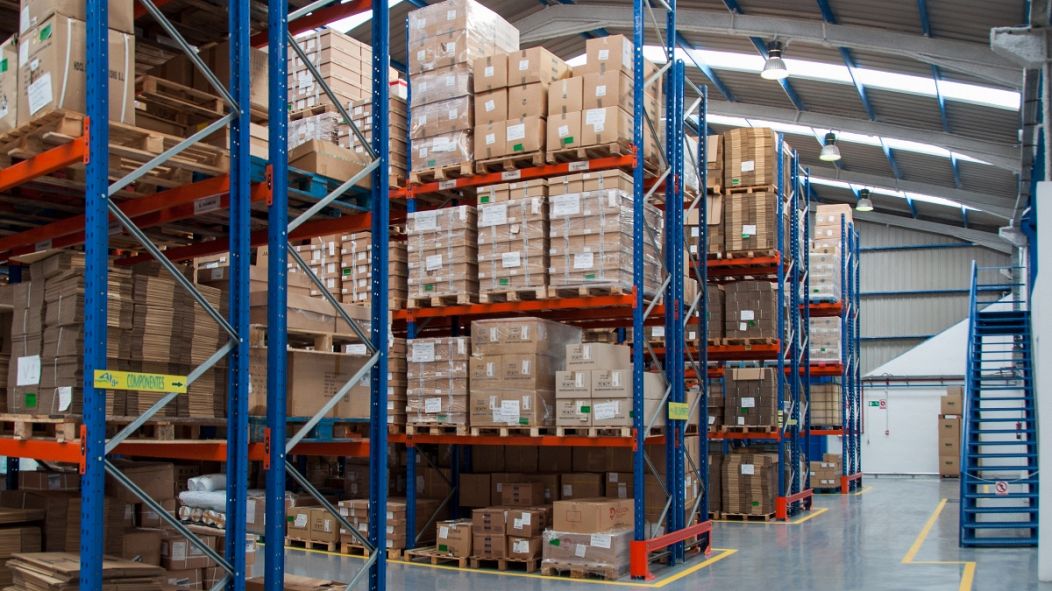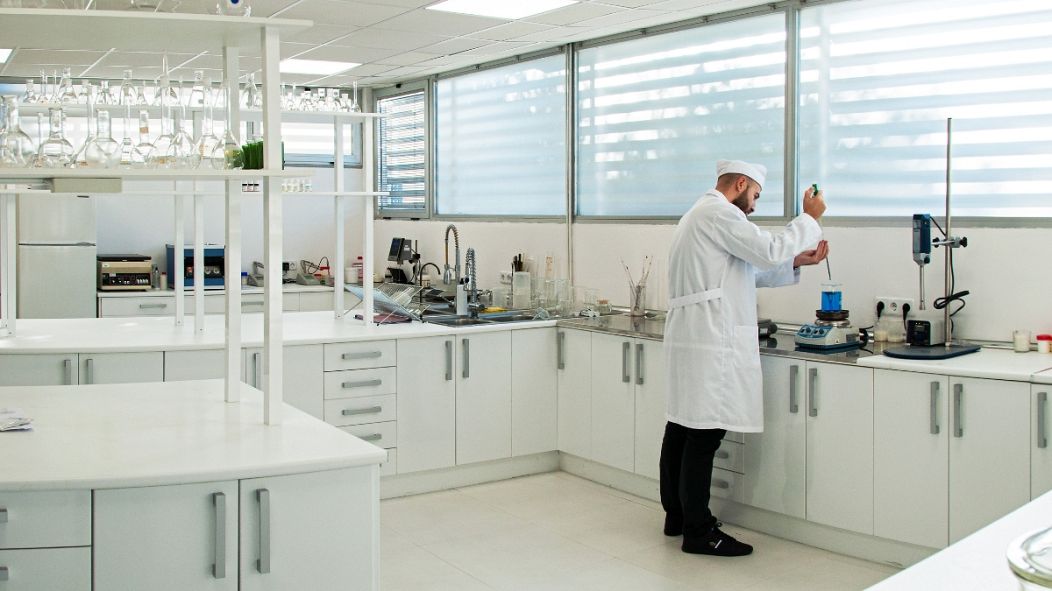We toured a factory making beauty products for big brands and that's what we learnt
After a bus ride across the vast and arid landscapes stretching on the outskirts of Madrid, followed by a walk through an industrial zone surrounded by yellow fields, I reached my destination. In this remote corner of the city, silence is only occasionally broken by the sound of a jackhammer or a truck passing by.
My work today brings me to this cluster of grey and white buildings hosting a diverse range of labs where beauty products are successively designed, tested and manufactured. A place certainly remote but intricately connected to a global market valued at USD 532.43 billion in 2017 according to a report by Orbis Research, as piles and piles of creams, shampoos and body oils are also packaged up and shipped around the world, precisely from here, everyday.
Alga Cosmetica produces cosmetics for local and international brands. It manufactures the products either by testing and using the formulation designed by their client or, more frequently, by researching and designing them from scratch.
“Our clients are both small companies and big multinationals. They tell us what kind of products they want, the product claim, and whether it should contain specific natural extracts or raw materials. From there, we research and design something that fits their expectation,” explains Salvador Arribas, manager of Alga Cosmetica.
Complexity in the supply chain of cosmetic beauty products
Once the design is defined and approved by the client, the team tests the stability of the formula and sends it to an independent lab which will conducts additional tests. Scientists will check the product is both safe to use and confirm its properties. This whole operation can take from six months to a couple of years.
Currently, Alga Cosmetica is working on an ambitious project to produce a line of cosmetics for a French multinational, they can't reveal the name. “The companies we work with often don’t want to say we are producing their cosmetics. They prefer to say they are in charge of the production themselves,” Arribas adds.
This is common in the industry. Whilst a lot of the big players in the industry have their own labs and produce their cosmetics in house, it's harder for smaller brands to do so because maintaining the installations to manufacture new products is costly and turned out to be unsustainable on the long term.
This is why a growing number of cosmetic brands are now working with companies like Alga Cosmetica to produce some of their best-selling items, which complicates things when these brands want to have a precise understanding of their supply chain and the origin of their raw materials.
“A lot of companies do not have full transparency because they push out the responsibilities of knowing where the raw materials come from and in what conditions they are produced onto their distributors or the labs they work with,” Donna Westerman, Head of Consumer Goods and Retail at global risk and strategic consulting firm Maplecroft.
The origins of raw materials of beauty
In June 2018, Maplecroft published a report showing that a number of raw materials commonly use in cosmetics are associated with a high environmental, social and governance risk.
About 30 per cent of the ingredients used in cosmetics that the analysts looked at were derived from either mined or agricultural commodities. There is a risk that some of these commodities may have been produced in unethical and unsustainable conditions.
Carnauba wax or candelilla wax, which provides a wax base for many mascaras on the market, are good examples. These raw materials could indeed be linked to working hour violations in Brazil and Mexico.
“Working conditions and exploitation can be largely driven by quota based systems. Workers collectingwax leaves can be subject to long working hours as they are trying to meet targets. Because their pay isbased on the quantity of leaves they pick rather than the time they spend in the field, they end up working outside of "normal" hours; without any compensation for it,” explains Meagan Norris, commodities analyst and author of the report.
The report suggests the working conditions of the people getting the raw materials for cosmetics or the environmental impact of doing so may sometimes be overlooked. However, due to the complexity of the supply chains in many large cosmetic companies, it is often hard to check whether this is really the case, or to tell which cosmetics may be the most problematic.
Furthermore, the recent rise in demand for natural and organic-based cosmetics does not guarantee ethical production.
“Ethical and organic can overlap but they are distinctly different. Ethical practices in the supply chain is about looking at it from a human rights perspective, focusing on issues such as child labour and legality of hiring practices around the world. Choosing organically grown products does not necessarily ensure these practices are respected,” Westerman points out.
The way forward for the beauty industry
But it doesn’t mean that nothing can be done. Some companies - whether large brands or small labs producing cosmetics for their clients - are taking steps to inject some transparency and ethical practices back into their supply chains.
UK-based cosmetics retailer Lush has made this a priority. “We are working to make our supply chains as short as possible to get transparency and identify the opportunities and the risks. We look to go directly to producers rather than through distributors where we can, and we travel and visit production sites, to see the practices that are being implemented firsthand. It’s a big challenge for everyone in the industry, including us, when you're dealing with long supply chains for compound ingredients. But I think it’s something that’s worth focusing on,” explains Gabbi Loedolff, Senior Ethical Buyer at Lush.
In 2014, the company even went one step further by deciding to stop using natural mica in its cosmetics products. “Initially, we had found a source that was able to certify the origin of the mica, with third party verification. But then the specific department that we were working with got bought out and the new company was no longer able to offer the same third party verification. We could not find a source we could be 100 per cent sure of, so we decided to transition to synthetic mica,” Loedolff explains.
This initiated a long and complex process of working with suppliers and existing materials to match the formulations and to ensure the end product remained the same. As of January this year all Lush cosmetics are manufactured without natural mica. “Part of the reason that people may not want to work to achieve more transparency is that when you know where the risks are and you know a raw material is problematic you have a responsibility to change. As the mica example shows, that’s complicated. But it needs to be done,“ Loedolff adds.
Changing things will take time, but players like Lush and other big companies have everything to win by making their supply chains more transparent and working with distributors and manufacturing facilities like Alga Cosmetica, with high quality standards and ethical working practices. “We need very strong leaders for other cosmetic companies to start following and have appropriate ethical processes in place,” Westerman says.
While they may often feel powerless, consumers could actually play a vital role to drive change. With cosmetics, brand loyalty is a big issue, and it can be a positive thing as people may expect more from their products and have more power to start a conversation.
“We are talking about a multi-billion dollar industry with a huge audience that is committed to human rights, so there is potential for them to make themselves heard to ensure the products they use are being sourced responsibility”, Westerman concludes.
Writer: Léa Surugue













